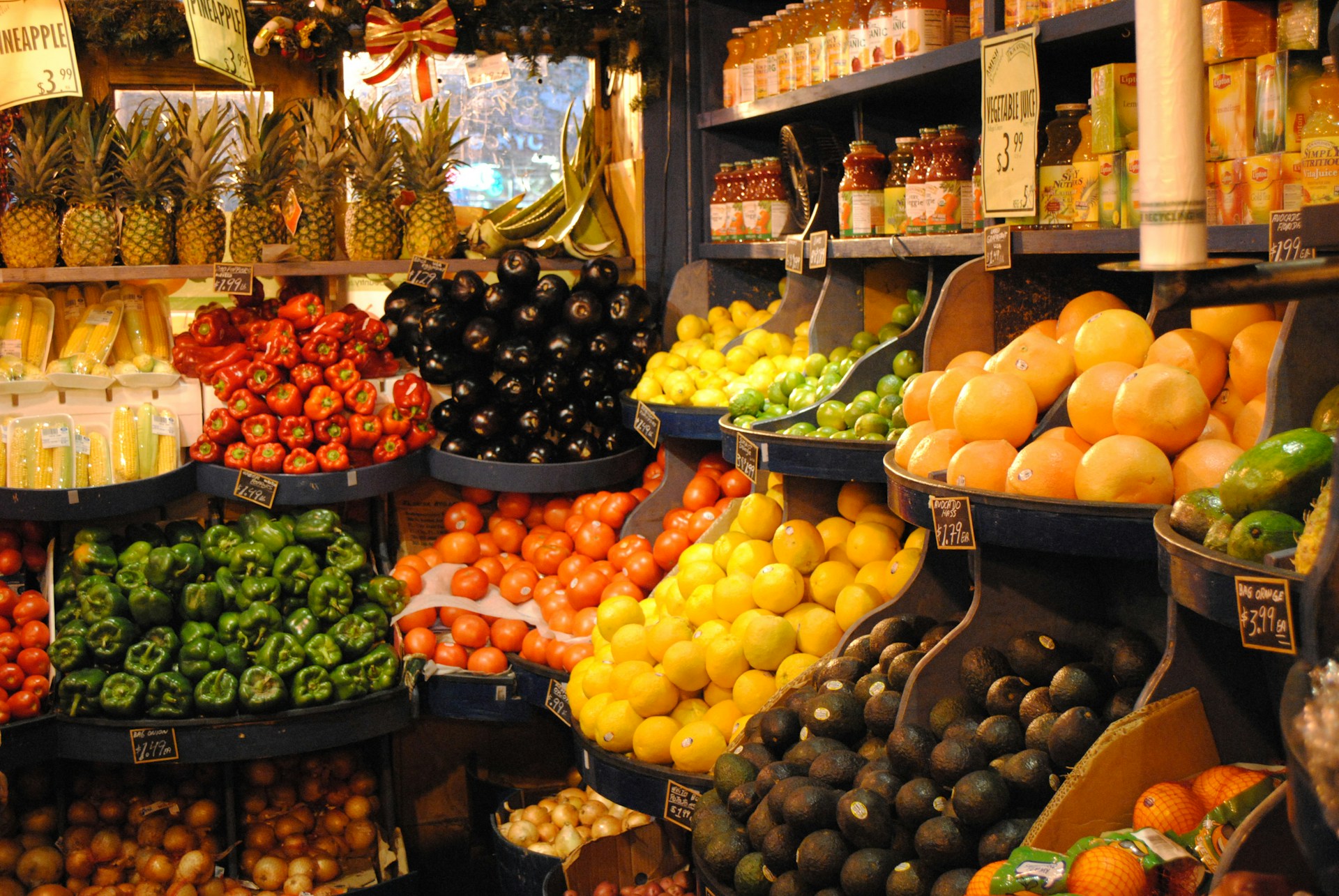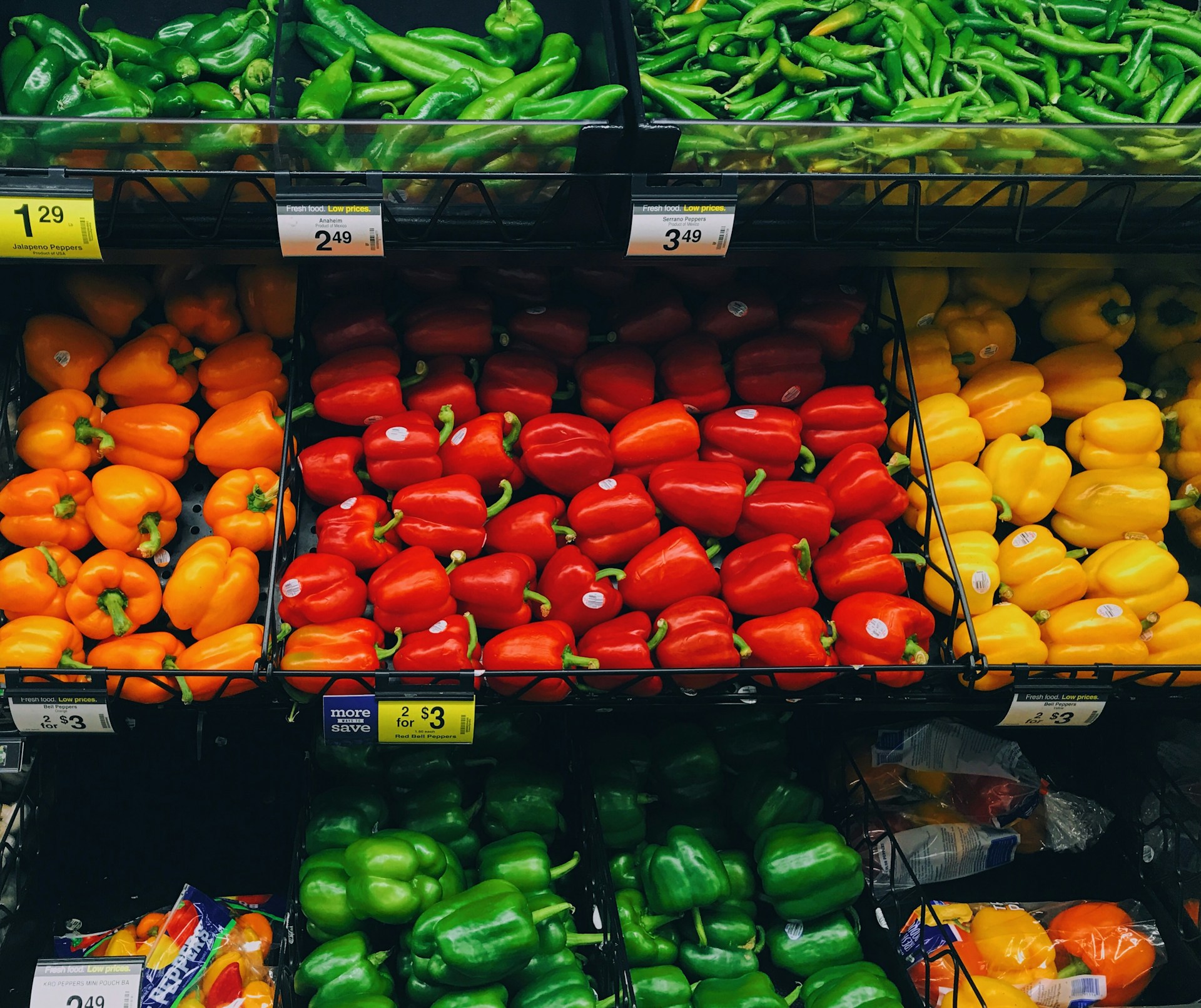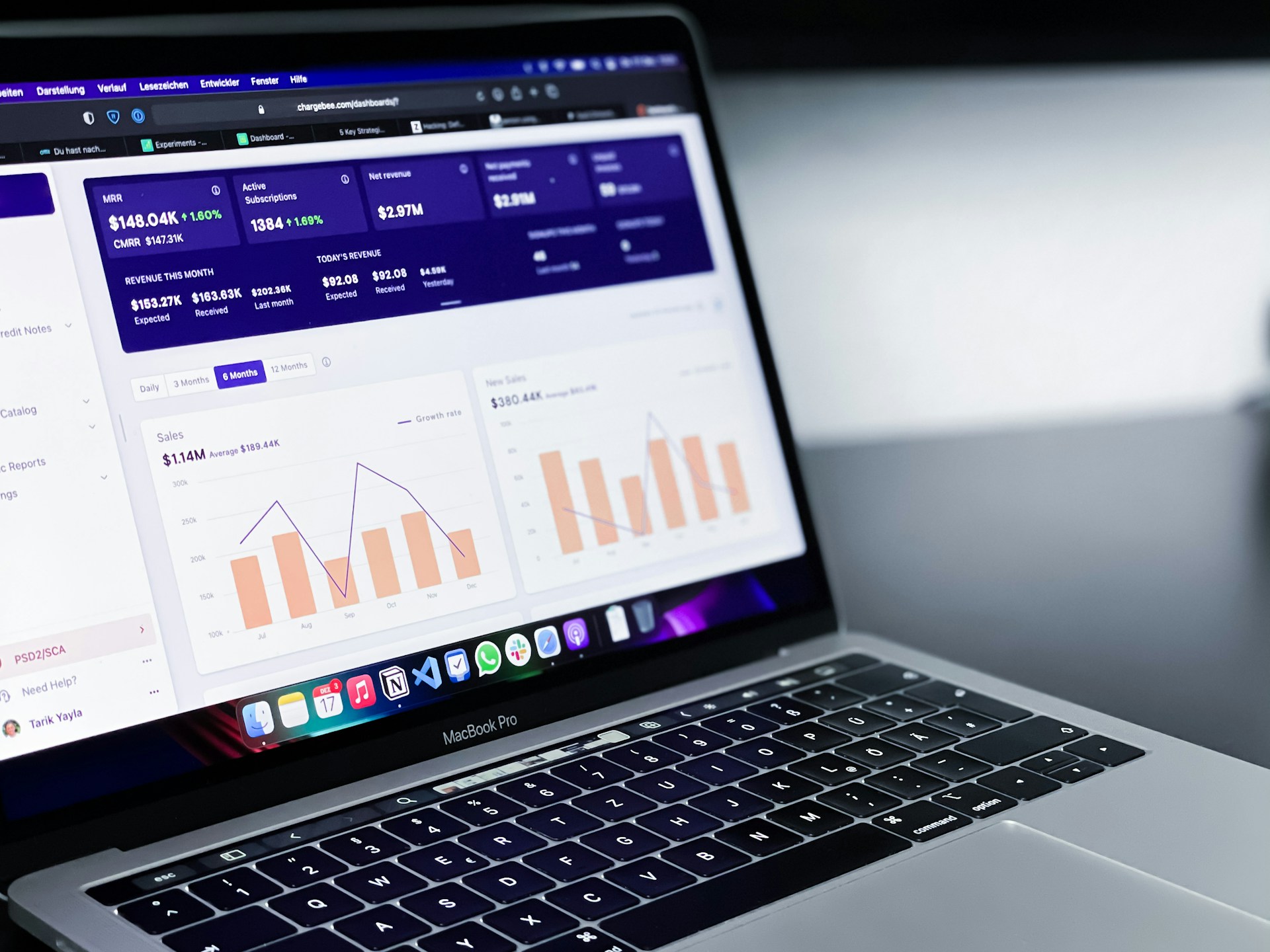The world has witnessed a radical shift in recent years with the growing influence of technology on commerce.
This profound transformation is notably conspicuous in the fresh produce industry.
Technology’s enormous potential and consequent impact have enabled streamlined delivery processes, ensuring better quality and cost-effectiveness.
The now-established interconnection between digital innovation and produce distribution opens up new possibilities.
It brings forth a more equipped, efficient, and robust model of conducting business.
In this article, we delve deeper to decipher the key digital trends influencing the transformations within the segment.
Digital Trends Transforming Produce Distribution
1. Blockchain Technology for Traceability
Blockchain technology is a revolutionary tool that has gained immense traction in various industries, including the produce distribution sector.
The incorporation of this decentralized technology can provide essential benefits in the tracking and tracing of agricultural products from farm to consumer.
Traceability is one critical aspect in the produce distribution chain, creating a demand for secure and transparent solutions like blockchain.
Blockchain technology serves as an immutable ledger, where every transaction or event that happens in the supply chain is recorded and verifiable.
This, in turn, provides a fully transparent, tamper-evident record, making fraudulent activities and food contamination issues less possible.
The attributes of blockchain help in increasing consumer trust, as they can access detailed information about the produce, such as origin, farming practices, and shipping data.
This significant step not only ensures the authenticity of the product but also revolutionizes the level of transparency in the produce distribution sector.
In addition, blockchain technology can expedite the resolution of issues by determining the exact point of a breakdown or a contaminant in the chain, leading to lower loss and wastage.
Blockchain technology also promotes efficiency and speed in the supply chain by eliminating the need for paper documentation, allowing real-time verification of transactions and events.
This can significantly cut down the time taken for administrative processes, thereby enhancing overall business operations in the produce distribution chain.
Moreover, the application of blockchain technology can help in reducing costs by identifying inefficiencies and bottlenecks in the supply chain – leading to better cost management and increased profitability.
Blockchain technology is not just a trend but an essentially transforming tool that brings valuable changes in produce distribution.
By implementing such technology, businesses can guarantee the quality and safety of their produce, as well as build trust and loyalty among increasingly aware and discerning consumers.
Given the many potential benefits of blockchain technology, its utilization in the produce distribution ecosystem will likely continue to grow, leading to better transparency, optimization, and efficiency in this crucial sector.
Undoubtedly, blockchain technology has a transformative potential to reshape the future of the produce distribution industry, making it a significant digital trend worth watching.
.2. AI-powered demand forecasting.
As part of the digital transformation of produce distribution, AI-powered demand forecasting is playing a crucial role.
Using Artificial Intelligence (AI), businesses can analyze vast amounts of data to predict future demand with remarkable accuracy.
AI algorithms learn from past trends, patterns, and sales data to estimate the quantity of product that will be required in the future.
These algorithms use complex predictors such as seasonal trends, consumption patterns and changing consumer preferences.
AI-powered demand forecasting enables distributors to fine-tune their inventory, thereby reducing waste and enhancing profits.
AI-powered demand forecasting is not confined to just distribution companies, but also, significantly benefits growers and farmers.
By knowing projected demand, farmers can plan their planting schedules accordingly, reducing overproduction and waste.
Furthermore, AI systems can also predict disease outbreaks and pests based on weather patterns and historical data, allowing farmers to take preventive measures in advance.
Demand forecasting using AI can also assist in managing price volatility, a significant challenge in the farming industry.
With accurate demand forecasts, farmers and distributors can hedge against potential price falls and secure their profits.
AI-powered systems can also predict changes in consumer behaviour and preferences, enabling businesses to stay ahead of market trends.
For instance, if data analysis predicts a growing interest in organic products, distributors can adjust their offerings accordingly.
Lastly, detailed demand forecasting allows for more efficient supply chain management, reducing cost and improving customer satisfaction.
Accurate demand forecasting means there is less likelihood of stock-outs or overstocked products.
It leads to optimized warehouse management and more efficient and cost-effective logistics.
AI-powered demand forecasting is, therefore, a transformative digital trend in produce distribution, providing significant advantages to farmers, distributors and consumers alike.
3. IoT for real-time inventory tracking.
The Internet of Things (IoT) holds exceptional potential to transform the way produce is distributed in many ways.
One of the most significant capacities of IoT in the distribution of produce is in real-time inventory tracking.
This in itself provides an effective tool to manage stocks, reduce waste, and enhance efficiency.
With IoT, distributors can harness smart sensors attached to produce boxes or pallets, which instantly transmit data about the produce’s location.
By leveraging IoT for inventory tracking, it’s possible to create a system that updates inventory data in real time, which significantly reduces the likelihood of stock depletion or product waste.
The data collected may include the produce’s current state, its location, and other important factors that may affect the product’s value.
The ability to access this data in real time can decrease delivery times and ensure customers receive the freshest possible produce.
This innovative procedure has proved to be incredibly favourable for farmers, who can keep real-time tabs on their produce even after it has left the farm, ensuring a degree of quality control that was formerly impossible.
Moreover, it’s a vastly beneficial tool for distributors as they can track the entire distribution process, pinpoint any inefficiencies, and act promptly to mend them.
IoT for real-time inventory tracking ensures the immediate and efficient reaction to potential issues, significantly lowering the chance of rotting produce or other various kinds of waste.
This can especially be important in terms of distribution, where speed and timing are crucial, and where the condition of the produce can directly affect consumer satisfaction.
Ultimately, the potential benefits of implementing IoT for real-time inventory tracking in produce distribution are immense.
The efficiency improvements can result in less food waste, better quality produce reaching consumers, and, consequently, higher profits for both farmers and distributors.
Beyond merely reacting to problems, this technology allows for proactive problem-solving by predicting potential issues before they arise, ensuring consistent product availability, and enhancing end-customer satisfaction in the process.
Despite these advantages, the implementation of IoT into the agriculture sector is still in its early stages, with plenty more room for innovation and advanced developments.
4. Drones for Faster Delivery
In the world of produce distribution, the advent of drones has drastically revolutionized the speed and efficiency of delivery.
These unmanned airborne vehicles offer a fast, reliable, and often cheaper alternative to traditional methods of transport.
The main benefit of using drones in this context revolves around the extensive reduction in delivery times.
Being capable of flying directly towards their destination without being hindered by factors like traffic congestion, drones turn out to be highly efficient in time-sensitive deliveries.
Furthermore, with advancements in GPS technology, they can effectively navigate complex terrains and deliver goods to even the most remote areas.
Another promising aspect of drone delivery is its scalability.
Companies can utilize a fleet of drones to handle large quantities of orders simultaneously, promoting a level of operational efficiency that is otherwise unattainable through conventional delivery systems.
Apart from improving the speed and efficiency of deliveries, drones also reduce the environmental footprint associated with product distribution.
Drones are typically electrically powered, which means they produce zero emissions during their operation.
This offers a significant advantage in the fight against climate change by reducing the reliance on fossil fuel-powered delivery vehicles.
However, regulatory challenges still pose a significant hurdle in the widespread adoption of drone delivery.
Regulatory authorities across the globe are progressively working on developing laws that will safely enact the wide-scale use of drone technology while ensuring public and aviation safety.
One inevitable challenge that needs to be overcome is related to security and privacy concerns.
Flying drones can be seen as invading privacy, especially in urban residential areas where there can be a fear of surveillance.
As for security, the risk of drones being hijacked or manipulated for malicious purposes is real and is a field of on-going studies.
But despite the hurdles, the potential benefits of drone technology in produce distribution cannot be overstated – instant deliveries, reduction in overhead costs and contribution to environment sustainability are just a few to mention.
Over time, as regulatory challenges are met and the technology evolves, drones are set to play a pivotal role in the future of produce distribution.
5. E-commerce for Direct Farm-to-Consumer Sales
Direct farm-to-consumer sales via e-commerce are growing in popularity and will increasingly become a key digital trend in produce distribution.
With an e-commerce platform, farmers can sell their produce directly to consumers, cutting out the middlemen, and resulting in fresher produce for the consumer and higher profit margins for the farmers.
This direct farm-to-consumer model fosters a significant shift in traditional supply chains by emphasizing a business model that values freshness and sustainability over mass production.
Furthermore, this shift towards digital sales platforms allows smaller farmers who previously may not have been able to compete with larger growers, to reach a wider audience.
E-commerce platforms also allow the unique opportunity for the consumer to get to know the farm and the farmers behind their food, fostering a sense of connection and trust.
This sense of connection and trust can be leveraged into a loyal customer base, leading to more consistent and reliable sales for the farmer.
In the future, expect to see more farmers adopting e-commerce platforms for their sales, leading to a more diverse and vibrant market for consumers.
Moreover, this shift towards digital sales platforms is also beneficial from an environmental perspective as it reduces food wastage significantly.
By selling directly to consumers, farmers can ensure optimum harvest timings resulting in fresher produce and less food waste due to overproduction.
One significant challenge of this model, however, is the logistics of delivering farm-fresh produce directly to consumers’ doors.
Despite this challenge, e-commerce platforms are innovating ways to ensure efficient and effective delivery systems, making farm-to-door delivery a growing reality.
These innovations include developing better cold chain logistic solutions, using AI-powered delivery route optimization, and leveraging local delivery services to ensure speedy delivery and maintain the quality of the produce.
An additional benefit of this e-commerce based model is that it facilitates better traceability by creating a direct link between the farm and the consumer.
When consumers know exactly where their food comes from, it can improve transparency in the food supply chain, leading to increased consumer confidence in the produce they are buying.
As a result of these benefits, e-commerce platforms for direct farm-to-consumer sales are set to be a significant digital trend in transforming the produce distribution industry.
6. Smart packaging for longer shelf life
In the digital era, one of the significant trends transforming produce distribution is the implementation of smart packaging.
This innovation transcends the basic function of packaging as just packaging materials, evolving into an interactive tool that increases product shelf life, enhances product safety, and enables real-time communication with consumers.
Smart packaging plays a huge role in achieving maximum efficiency by reducing food waste and ensuring that fresh produce retains its quality for longer.
The purpose of packaging within the fresh produce sector extends beyond simply serving as a means of transport, especially with the integration of digitally driven solutions like smart packaging.
A key feature of smart packaging in produce distribution is its active and intelligent components.
The active component manipulates the condition of the packaged food to extend its shelf life while maintaining its nutritional quality.
On the other hand, the intelligent component provides information about the quality of the produce, possible spoilage, and usage instructions.
For instance, smart packaging can indicate if a packaged product like fruits or vegetables meets optimal temperature conditions during its transport.
If the produce is exposed to temperature conditions beyond the acceptable range, the intelligent component can change color to alert distributors or consumers about possible food spoilage.
The integration of nanotechnology in packaging can also help enhance properties of packaging material such as gas barrier properties, mechanical properties, and microbial activity to extend the shelf-life of produce.
Moreover, smart packaging can also provide various benefits to consumers, such as offering information about product origin, handling, and authenticating produce’s organic or non-GMO status.
The involvement of digital technology in smart packaging provides a tangible route to meet consumer expectations, creating transparency and trust between the consumers and distributors.
It is also a route for companies to align with sustainability practices by using biodegradable or recyclable materials for packaging, thereby addressing environmental concerns.
Another advantage is the prospect for customized packaging solutions, which accommodate the specific needs of individual produce, enforcing their freshness and quality.
Indeed, smart packaging is not merely a trend but a transformative digital tool in the produce distribution, creating significant opportunities for innovation, efficiencies, and growth in the sector.
7. Robotics for automated sorting and packaging.
Pioneering the use of robotics in the distribution of produce brings with it significant benefits for the industry.
Automated machinery like robotics, plays a crucial role in the streamline of produce distribution, allowing for faster and more efficient sorting and packaging.
Providing consistency and precision, robotics is incredibly valuable in ensuring that produce is handled with the utmost care, reducing the likelihood of damage during the sorting process.
Through the automation of these tasks, packaging time is considerably reduced, allowing for an increased production rate.
By eliminating the need for manual labour in these processes, robotics can greatly increase the overall efficiency of produce distribution.
Investment in automation technologies, such as robotics, by businesses within the industry has seen an increase, acknowledging the potential time and cost-saving benefits it can provide.
Not only do these technological advancements provide labor-saving benefits, the reduced reliance on manual labor also diminishes the risk of human error, maximizing the overall product quality.
Furthermore, robotics can play a vital role in performing repetitive tasks, reducing the physical strain on human staff, and thereby increasing overall work efficiency.
Robotics, in the realm of distribution, also offers a solution to common challenges such as labor shortages, particularly during peak harvest seasons.
Most importantly, automated sorting and packaging using robotics enhances productivity while minimizing waste.
Robotics ability to work without tiring makes them an integral part of the future of produce distribution.
By using robotics, businesses can ensure the accurate and consistent sizing and grading of their produce, improving overall quality assurance.
Overall, the use of robotics in produce distribution opens up possibilities for improving operational efficiency, scalability, and the adaptation to market dynamics.
The automation of these processes also improves the traceability of the produce, as automated systems are capable of keeping more detailed records than their human counterparts.
Despite these numerous benefits, the initial investment in robotics can be significant, however, the cost savings in the long term can make this a viable option for many businesses.
The Bottom Line
Technological advancements are transforming the agriculture industry at an impressive rate.
Blockchain technology, for instance, improves transparency and traceability, enhancing trust among stakeholders.
AI-powered demand forecasting allows smarter decision-making, optimizing supply chain efficiency and reducing wastage.
IoT-based real time inventory tracking ensures effective management and prevents stockouts or overstocking.
Drones are revolutionizing delivery methods, drastically reducing delivery times and costs.
E-commerce platforms enable direct farm-to-consumer sales, eliminating middlemen.
Smart packaging technologies improve shelf life, reducing waste and improving food safety.
Lastly, robotics automate the sorting and packaging process, improving efficiency.- Patterns are clear – the fusion of technology with agriculture has manifold benefits.
It not only improves operational efficiency but also mitigates risks, minimizes waste, and enhances profitability.
While these developments are encouraging, continuous research and adoption are essential to realize their full potential.
After all, the future of agriculture rests heavily upon our ability to leverage these innovative technologies effectively.




